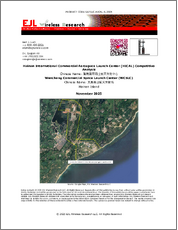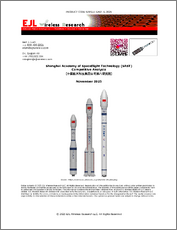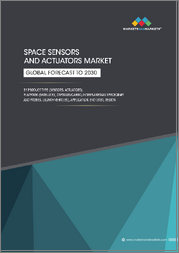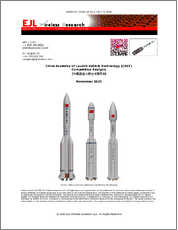
|
시장보고서
상품코드
1685196
위성 발사체(SLV) 시장 : 기회, 성장 촉진요인, 산업 동향 분석(2025-2034년)Satellite Launch Vehicle (SLV) Market Opportunity, Growth Drivers, Industry Trend Analysis, and Forecast 2025 - 2034 |
||||||
세계의 위성 발사체(SLV) 시장은 2024년 82억 달러에 달했으며, 2025년부터 2034년까지 연평균 성장률(CAGR) 13.7%로 성장할 것으로 예측됩니다.
전 세계 산업계와 정부 기관이 기후 분석, 재난 관리, 환경 평가, 농업 예측을 위해 위성 데이터에 의존하면서 지구 관측 및 기상 모니터링에 대한 수요가 증가함에 따라 시장 확대에 박차를 가하고 있습니다. 항공, 농업, 국방, 도시 계획 분야에서 실시간 고정밀 정보에 대한 필요성은 위성 배치에 대한 투자를 지속적으로 촉진하고 있습니다.
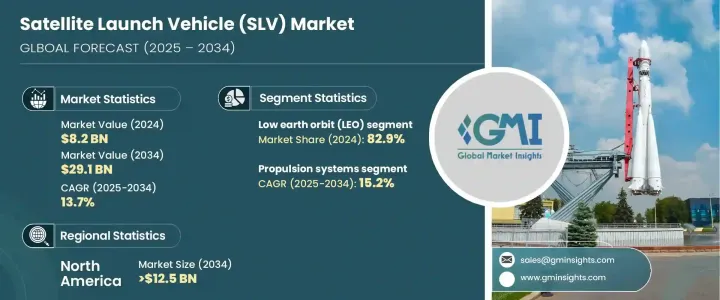
기술 발전으로 위성 발사가 더욱 비용 효율적이고 효율적으로 이루어지면서 기업들은 다양한 용도에 맞는 혁신적인 발사 솔루션을 개발할 수 있게 되었습니다. 통신 분야는 위성 기반 통신 네트워크의 통합으로 빠르게 발전하고 있으며, 글로벌 연결성을 향상시키고 외딴 지역의 디지털 격차를 해소하고 있습니다. 내비게이션 및 지리공간 정보 용도는 위치 추적, 매핑 및 교통 관리를 위해 위성 기반 인사이트에 의존하는 산업이 증가함에 따라 시장을 더욱 강화하고 있습니다. 또한 과학 연구 분야에서는 우주 탐사, 천체 물리학 연구, 환경 모니터링에 위성 기술을 활용하여 발사체 기술에 대한 추가 투자를 추진하고 있습니다.
| 시장 범위 | |
|---|---|
| 시작 연도 | 2024년 |
| 예측 연도 | 2025-2034년 |
| 시작 금액 | 82억 달러 |
| 예측 금액 | 291억 달러 |
| CAGR | 13.7% |
정부와 민간 기업은 재사용 가능한 로켓 기술에 집중하여 운영 효율성을 최적화하는 동시에 전반적인 비용을 절감하고 있습니다. 기업들은 증가하는 상용 위성 네트워크를 수용할 수 있는 유연하고 신속하게 배치할 수 있는 발사 서비스를 개발하기 위해 경쟁하고 있습니다. 더 작고 효율성이 높은 위성에 대한 수요로 인해 비용 효율적이고 적응 가능한 발사 솔루션에 대한 필요성이 가속화되어 시장 성장이 더욱 증폭되고 있습니다.
2024년에는 저궤도(LEO) 위성이 전체 매출의 82.9%를 차지하며 시장을 주도했습니다. 지구와의 근접성, 낮은 발사 비용, 높은 효율성으로 인해 지구 관측, 데이터 전송, 글로벌 통신을 위해 선호되는 위성입니다. 고속 광대역 연결에 대한 수요가 증가함에 따라 LEO 위성 배치에 박차를 가하고 있으며, 더 빈번하고 안정적인 발사 서비스가 요구되고 있습니다. 소형 위성 기술의 지속적인 발전은 통신에서 방위산업에 이르는 다양한 산업에 비용 효율적이고 다양한 솔루션을 제공하는 소형 경량 위성이 시장 확대를 주도하는 데 중요한 역할을 하고 있습니다.
추진 시스템 부문은 예측 기간 동안 15.2%의 연평균 성장률이 예상되는 가장 빠른 성장을 경험하고 있습니다. 추진 기술은 정확한 위성 배치를 보장하고 성능과 효율성을 향상시키기 위해 액체, 고체, 하이브리드 및 전기 추진 시스템의 채택을 촉진하는 데 매우 중요합니다. 리필 가능한 로켓 엔진과 극저온 추진력과 같은 혁신은 연료 활용도와 가속 능력을 개선하여 보다 비용 효율적이고 지속 가능한 위성 발사를 위한 기반을 마련하고 있습니다.
북미는 2034년까지 125억 달러의 매출을 기록할 것으로 예상되는 위성 발사체 시장을 지배할 것으로 전망됩니다. 이 지역은 정부 이니셔티브와 번성하는 상업 부문에 힘입어 우주 발사 인프라를 선도하고 있습니다. NASA와 국방부 같은 기관은 재사용 가능하고 저렴한 발사 솔루션을 개발하려는 민간 업계의 노력을 지원하고 있습니다. 소형 위성 발사의 증가, 우주 탐사 프로그램의 확대, 상업 위성 네트워크에 대한 의존도 증가로 인해 시장 확대가 강화되고 있습니다. 재사용 가능한 로켓 기술은 임무 유연성을 향상시키는 동시에 비용을 크게 절감하여 북미 지역을 전 세계 위성 발사 발전의 핵심 지역으로 만들고 있습니다.
목차
제1장 조사 방법과 조사 범위
- 시장 범위와 정의
- 기본 추정과 계산
- 예측 계산
- 데이터 소스
- 1차
- 2차
- 유료
- 공적
제2장 주요 요약
제3장 업계 인사이트
- 생태계 분석
- 밸류체인에 영향을 주는 요인
- 이익률 분석
- 혼란
- 장래 전망
- 제조업체
- 유통업체
- 공급자의 상황
- 이익률 분석
- 주요 뉴스와 대처
- 규제 상황
- 영향요인
- 성장 촉진요인
- 위성 기반 통신 및 IoT 연결에 대한 수요 증가
- 재사용 가능한 로켓 기술의 발전으로 발사 비용 절감
- 민간 기업의 상업적 우주 탐사 투자 확대
- 국가 안보 및 방위 위성에 대한 정부 지출 증가
- 세계의 지구 관측 및 기상 모니터링에 대한 수요 증가
- 업계의 잠재적 위험 및 과제
- 위성 발사 인프라에 필요한 높은 자본 지출
- 규제 문제 및 발사 라이센스 취득 지연
- 성장 촉진요인
- 성장 가능성 분석
- Porter's Five Forces 분석
- PESTEL 분석
제4장 경쟁 구도
- 소개
- 기업 점유율 분석
- 경쟁 포지셔닝 매트릭스
- 전략 전망 매트릭스
제5장 시장 추계 및 예측 : 발사체별(2021-2034년)
- 주요 동향
- 소형(350,000kg 미만)
- 중대형(350,000kg 이상)
제6장 시장 추계 및 예측 : 페이로드별(2021-2034년)
- 주요 동향
- 500kg 미만
- 500-2,500kg
- 2,500kg 이상
제7장 궤도별 시장 추계 및 예측 : 궤도별(2021-2034년)
- 주요 동향
- 저궤도(LEO)
- 중궤도(MEO)
- 정지궤도(GEO)
제8장 시장 추계 및 예측 : 발사 로켓별(2021-2034년)
- 주요 동향
- 일회용/소모품
- 재사용형
제9장 시장 추계 및 예측 : 단계별(2021-2034년)
- 주요 동향
- 1단계
- 2단계
- 3단계
제10장 시장 추계 및 예측 : 하위 시스템별(2021-2034년)
- 주요 동향
- 구조
- 유도, 항법 및 제어 시스템
- 추진 시스템
- 텔레메트리, 추적 및 명령 시스템
- 전력 시스템
- 분리 시스템
제11장 시장 추계 및 예측 : 지역별(2021-2034년)
- 주요 동향
- 북미
- 미국
- 캐나다
- 유럽
- 영국
- 독일
- 프랑스
- 이탈리아
- 스페인
- 러시아
- 아시아태평양
- 중국
- 인도
- 일본
- 한국
- 호주
- 라틴아메리카
- 브라질
- 멕시코
- 중동 및 아프리카
- 남아프리카
- 사우디아라비아
- 아랍에미리트(UAE)
제12장 기업 프로파일
- Arianespace
- Blue Origin
- Boeing Defense, Space &Security
- Firefly Aerospace
- ISRO(Indian Space Research Organisation)
- Lockheed Martin Corporation
- Mitsubishi Heavy Industries, Ltd.
- Northrop Grumman Corporation
- Relativity Space
- Rocket Factory Augsburg(RFA)
- Rocket Lab USA, Inc.
- SpaceX
- United Launch Alliance(ULA)
- Virgin Orbit
The Global Satellite Launch Vehicle Market reached USD 8.2 billion in 2024 and is projected to expand at a CAGR of 13.7% between 2025 and 2034. Increasing demand for Earth observation and weather monitoring is fueling market expansion, as industries and government agencies worldwide rely on satellite data for climate analysis, disaster management, environmental assessment, and agricultural forecasting. The need for real-time, high-precision information in aviation, agriculture, national defense, and urban planning continues to drive investments in satellite deployment.

Technological advancements are making satellite launches more cost-effective and efficient, enabling companies to develop innovative launch solutions that cater to diverse applications. The telecommunications sector is rapidly evolving with the integration of satellite-based communication networks, enhancing global connectivity and bridging digital divides in remote regions. Navigation and geospatial intelligence applications are further bolstering the market, as industries depend on satellite-driven insights for location tracking, mapping, and transportation management. Additionally, the scientific research sector is leveraging satellite technology for space exploration, astrophysics studies, and environmental monitoring, propelling further investments in launch vehicle technology.
| Market Scope | |
|---|---|
| Start Year | 2024 |
| Forecast Year | 2025-2034 |
| Start Value | $8.2 Billion |
| Forecast Value | $29.1 Billion |
| CAGR | 13.7% |
Governments and private enterprises are intensifying their focus on reusable rocket technology, optimizing operational efficiency while reducing overall costs. Companies are competing to develop flexible, rapid-deployment launch services that accommodate the growing number of commercial satellite networks. The demand for smaller, highly efficient satellites has accelerated the need for cost-effective, adaptable launch solutions, further amplifying market growth.
Low Earth orbit (LEO) satellites dominated the market in 2024, accounting for 82.9% of total revenue. Their proximity to Earth, lower launch costs, and high efficiency make them the preferred choice for Earth observation, data transmission, and global communications. The increasing demand for high-speed broadband connectivity has spurred the deployment of LEO satellite constellations, prompting frequent and reliable launch services. Ongoing advancements in small satellite technology have played a significant role in driving market expansion, as these compact, lightweight satellites offer cost-effective, versatile solutions for industries ranging from telecommunications to defense.
The propulsion systems segment is experiencing the fastest growth, with a projected CAGR of 15.2% over the forecast period. Propulsion technologies are crucial in ensuring accurate satellite placement, driving the adoption of liquid, solid, hybrid, and electric propulsion systems to enhance performance and efficiency. Innovations such as refillable rocket engines and cryogenic momentum are improving fuel utilization and acceleration capabilities, paving the way for more cost-effective and sustainable satellite launches.
North America is set to dominate the satellite launch vehicle market, with projections indicating USD 12.5 billion in revenue by 2034. The region leads in space launch infrastructure, driven by government initiatives and a thriving commercial sector. Agencies such as NASA and the Department of Defense are backing private industry efforts to develop reusable and affordable launch solutions. The growing number of small satellite launches, expanding space exploration programs, and increasing reliance on commercial satellite networks are strengthening market expansion. Reusable rocket technology is enhancing mission flexibility while significantly reducing costs, making North America a key player in global satellite launch advancements.
Table of Contents
Chapter 1 Methodology & Scope
- 1.1 Market scope & definitions
- 1.2 Base estimates & calculations
- 1.3 Forecast calculations
- 1.4 Data sources
- 1.4.1 Primary
- 1.4.2 Secondary
- 1.4.2.1 Paid sources
- 1.4.2.2 Public sources
Chapter 2 Executive Summary
- 2.1 Industry synopsis, 2021-2034
Chapter 3 Industry Insights
- 3.1 Industry ecosystem analysis
- 3.1.1 Factor affecting the value chain
- 3.1.2 Profit margin analysis
- 3.1.3 Disruptions
- 3.1.4 Future outlook
- 3.1.5 Manufacturers
- 3.1.6 Distributors
- 3.2 Supplier landscape
- 3.3 Profit margin analysis
- 3.4 Key news & initiatives
- 3.5 Regulatory landscape
- 3.6 Impact forces
- 3.6.1 Growth drivers
- 3.6.1.1 Increasing demand for satellite-based communication and IoT connectivity
- 3.6.1.2 Advancements in reusable rocket technology reducing launch costs
- 3.6.1.3 Expanding commercial space exploration investments from private companies
- 3.6.1.4 Growing government spending on national security and defense satellites
- 3.6.1.5 Rising demand for global Earth observation and weather monitoring
- 3.6.2 Industry pitfalls & challenges
- 3.6.2.1 High capital expenditure required for satellite launch infrastructure
- 3.6.2.2 Regulatory challenges and delays in obtaining launch licenses
- 3.6.1 Growth drivers
- 3.7 Growth potential analysis
- 3.8 Porter’s analysis
- 3.9 PESTEL analysis
Chapter 4 Competitive Landscape, 2024
- 4.1 Introduction
- 4.2 Company market share analysis
- 4.3 Competitive positioning matrix
- 4.4 Strategic outlook matrix
Chapter 5 Market Estimates & Forecast, By Vehicle, 2021-2034 (USD Million)
- 5.1 Key trends
- 5.2 Small (<350,000 kg)
- 5.3 Medium to Heavy (>350,000 kg)
Chapter 6 Market Estimates & Forecast, By Payload, 2021-2034 (USD Million)
- 6.1 Key trends
- 6.2 <500 kg
- 6.3 500-2,500 kg
- 6.4 >2,500 kg
Chapter 7 Market Estimates & Forecast, By Orbit, 2021-2034 (USD Million)
- 7.1 Key trends
- 7.2 Low Earth Orbit (LEO)
- 7.3 Medium Earth Orbit (MEO)
- 7.4 Geostationary Orbit (GEO)
Chapter 8 Market Estimates & Forecast, By Launch, 2021-2034 (USD Million)
- 8.1 Key trends
- 8.2 Single-use/Expendable
- 8.3 Reusable
Chapter 9 Market Estimates & Forecast, By Stage, 2021-2034 (USD Million)
- 9.1 Key trends
- 9.2 Single stage
- 9.3 Two stage
- 9.4 Three stage
Chapter 10 Market Estimates & Forecast, By Subsystem, 2021-2034 (USD Million)
- 10.1 Key trends
- 10.2 Structure
- 10.3 Guidance, Navigation & Control systems
- 10.4 Propulsion systems
- 10.5 Telemetry, Tracking & Command systems
- 10.6 Electrical power systems
- 10.7 Separation systems
Chapter 11 Market Estimates & Forecast, By Region, 2021-2034 (USD Million)
- 11.1 Key trends
- 11.2 North America
- 11.2.1 U.S.
- 11.2.2 Canada
- 11.3 Europe
- 11.3.1 UK
- 11.3.2 Germany
- 11.3.3 France
- 11.3.4 Italy
- 11.3.5 Spain
- 11.3.6 Russia
- 11.4 Asia Pacific
- 11.4.1 China
- 11.4.2 India
- 11.4.3 Japan
- 11.4.4 South Korea
- 11.4.5 Australia
- 11.5 Latin America
- 11.5.1 Brazil
- 11.5.2 Mexico
- 11.6 MEA
- 11.6.1 South Africa
- 11.6.2 Saudi Arabia
- 11.6.3 UAE
Chapter 12 Company Profiles
- 12.1 Arianespace
- 12.2 Blue Origin
- 12.3 Boeing Defense, Space & Security
- 12.4 Firefly Aerospace
- 12.5 ISRO (Indian Space Research Organisation)
- 12.6 Lockheed Martin Corporation
- 12.7 Mitsubishi Heavy Industries, Ltd.
- 12.8 Northrop Grumman Corporation
- 12.9 Relativity Space
- 12.10 Rocket Factory Augsburg (RFA)
- 12.11 Rocket Lab USA, Inc.
- 12.12 SpaceX
- 12.13 United Launch Alliance (ULA)
- 12.14 Virgin Orbit






